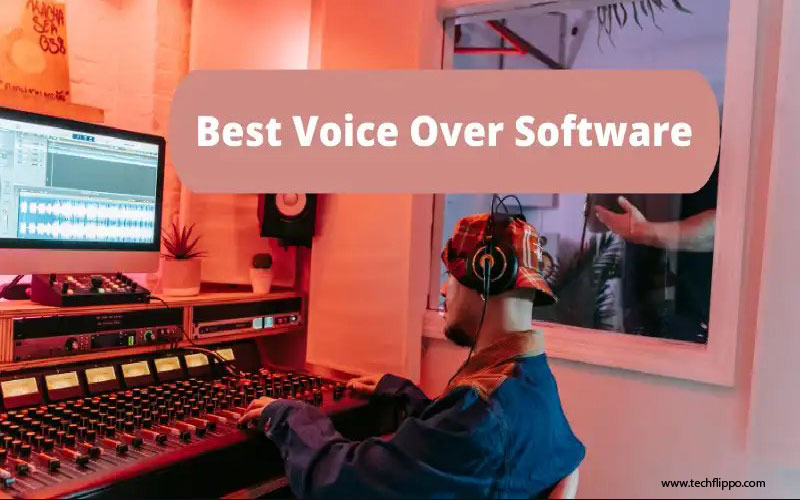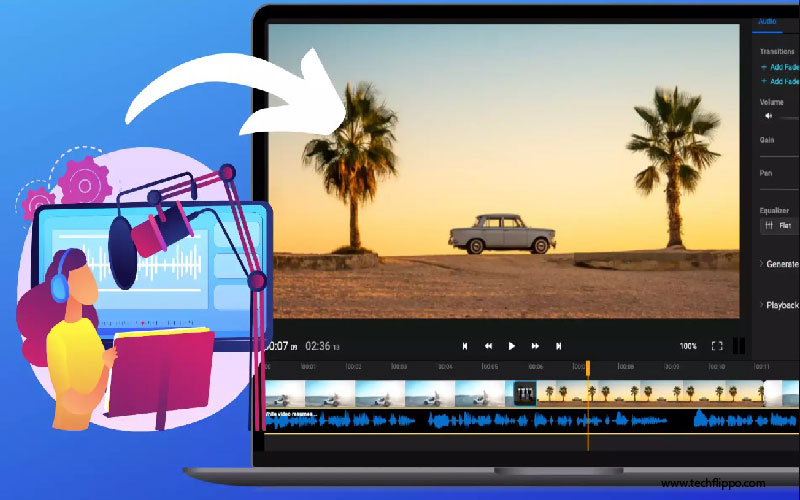Which is the Best Voice Over tool for Editing?
Voice over editing is an art form that brings scripts to life. Whether you’re a budding podcaster, video creator, or seasoned voice actor, having the right tools at your disposal can make all the difference in producing high-quality audio content. But with so many options available, finding the best voice over tool for editing can feel overwhelming.
Imagine crafting a captivating narrative that resonates with your audience—a smooth delivery interspersed with just the right dramatic pauses and inflections. A powerful voice over tool not only helps achieve this but also streamlines the entire process from recording to final production. Let’s delve deeper into why selecting a top-notch software is essential for success in today’s competitive market and explore some of the best choices out there.

The Importance of a Good Voice Over Tool
A good voice over tool can make all the difference in your audio projects. It enhances clarity and delivers a professional sound that captivates listeners. Quality matters, especially when conveying emotions or creating an engaging narrative.
With the right software, you can easily eliminate background noise, adjust pitch, and apply effects that enhance your recordings. These features help ensure your finished product sounds polished and meets industry standards.
Moreover, a reliable editing tool saves time and effort. Streamlined processes allow for quick edits and adjustments without sacrificing quality. This efficiency is vital for meeting deadlines in competitive environments.
Investing in quality software fosters creativity. When you’re not bogged down by technical limitations, you can focus more on storytelling and engaging your audience through your voice work. Choosing the best voice over tool empowers creators to elevate their craft to new heights.
Top Features to Look for in a Voice Over Tool
When searching for the best voice over tool for editing, consider essential features that can enhance your workflow and final product.
First, look for intuitive audio waveforms. Visual representations make it easier to pinpoint edits and adjustments. This will save you time during the editing process.
Next, explore noise reduction capabilities. A quality tool should effectively eliminate background sounds without compromising vocal clarity.
Multi-track support is another vital feature. It allows you to layer voice overs with music or sound effects seamlessly, creating a richer audio experience.
Additionally, check for built-in equalization options. This enables fine-tuning of frequency ranges to ensure your voice sounds its best across various platforms.
An extensive library of presets can speed up your work significantly by providing one-click solutions for common tasks or styles in voice over production.
Comparison of Popular Voice Over Tools
When it comes to voice over tools, three stand out: Adobe Audition, Pro Tools, and Audacity. Each offers distinct features catering to various levels of expertise.
Adobe Audition boasts a sleek interface and advanced editing capabilities. It’s perfect for professionals who need robust sound design options. The seamless integration with other Adobe products is an added bonus for those already in that ecosystem.
Pro Tools is revered in the industry for its powerful audio processing abilities. It’s ideal for studios focused on high-quality recordings but can come with a steeper learning curve.
On the flip side, Audacity shines as a free option that doesn’t compromise on essential features. Its open-source nature allows users to experiment without financial constraints, making it popular among beginners.
Each tool has strengths and weaknesses tailored to different user needs and experience levels.
A. Adobe Audition
Adobe Audition is a powerhouse in the realm of audio editing. Designed for professionals, it offers an extensive suite of features that cater to voice-over artists and sound engineers alike.
With its multi-track editing capabilities, users can easily manipulate different audio layers. This flexibility allows for seamless blending and mixing. The built-in effects enhance recordings with minimal effort.
Another standout feature is the spectral frequency display, which enables precise adjustments to problematic frequencies. Users can eliminate unwanted noise or enhance vocal clarity without compromising quality.
Collaboration is effortless with Adobe’s integration across Creative Cloud apps. This makes it a solid choice for those already invested in Adobe’s ecosystem.
While it may have a learning curve, many find that the investment pays off quickly in terms of productivity and finished product quality.

B. Pro Tools
Pro Tools is a powerhouse in the world of audio editing. It’s favored by both professionals and aspiring voiceover artists for its robust features. The software offers advanced capabilities that cater to diverse needs, from simple recordings to complex projects.
One standout aspect is its multi-track recording feature. This allows users to layer multiple voices or sound effects seamlessly. The intuitive interface makes navigation easy, even for newcomers.
Collaboration is another strong point. Pro Tools enables real-time edits among team members, which can be invaluable during tight deadlines.
Additionally, it supports an extensive range of plugins and formats, enhancing creativity and flexibility during the editing process. Whether you’re polishing narration or creating immersive audio landscapes, Pro Tools delivers exceptional quality every time you hit record.
C. Audacity
Audacity stands out as a powerful, free audio editing tool favored by many voice over artists. Its open-source nature makes it accessible to all levels of users, from beginners to professionals.
One of Audacity’s key strengths is its simplicity. The interface is intuitive, allowing users to navigate easily through various features without overwhelming complexity. Its wide array of effects and tools enhances vocal clarity and richness.
Moreover, Audacity supports multiple file formats. This flexibility allows for seamless integration with different projects or platforms. Users can quickly import recordings, apply edits, and export finished work in their preferred format.
Another notable aspect is the vibrant community surrounding Audacity. With extensive online resources—including tutorials and forums—users can find support whenever they encounter challenges or seek tips for improvement in their editing skills.
User-Friendliness and Accessibility
User-friendliness is a crucial factor when choosing the best voice over tool for editing. A simple interface allows users to navigate effortlessly through features and functions, making the editing process smoother.
Accessibility is equally important. Many creators work from various locations or devices, so cloud-based options can be incredibly beneficial. Tools that offer cross-platform compatibility ensure you can access your projects anytime and anywhere.
Look for software with robust tutorials and customer support. These resources are invaluable, especially if you’re just starting out in voice over work.
Intuitive shortcuts can significantly speed up your workflow as well. The less time spent figuring things out means more time dedicated to honing your craft.
An easy-to-use tool enhances creativity by reducing technical distractions, allowing users to focus on what truly matters: producing great content.
Cost and Affordability
When choosing the best voice over tool for editing, cost plays a vital role. The market offers options that cater to various budgets, from free software to high-end professional suites.
Free programs like Audacity provide essential features without any financial commitment. They are perfect for beginners or those who want to experiment before investing in more advanced tools.
On the other hand, premium options such as Adobe Audition and Pro Tools come with subscription fees or one-time purchases. These often offer extensive capabilities and superior sound quality but might not be necessary for every user.
Consider how frequently you will use the software and what specific features you need. A higher price tag doesn’t always guarantee better results; it’s about finding the right balance between functionality and your budget constraints.
Recommendations based on specific needs
When choosing the best voice-over tool for editing, consider your specific needs. For beginners or hobbyists, Audacity stands out due to its user-friendly interface and zero cost. It’s perfect for those just starting their journey in audio editing.
If you’re a professional looking for advanced features, Adobe Audition might be your go-to choice. Its robust toolkit allows for intricate sound design and mixing, making it ideal for high-quality projects.
For musicians or sound engineers who need extensive collaboration options, Pro Tools excels with its powerful session management capabilities. This is crucial when working on larger teams.
Think about whether you prioritize budget constraints or advanced functionalities. Each tool offers unique strengths tailored to various requirements in voice-over editing. Your project goals will ultimately guide the right selection.
Conclusion
When choosing the best voice over tool for editing, it’s essential to consider your specific needs. Whether you’re a beginner or an experienced professional, selecting software that aligns with your workflow can enhance productivity and elevate the quality of your projects.
Adobe Audition stands out for its robust features and seamless integration with other Adobe products. It’s ideal for those who need extensive capabilities in audio restoration and mixing.
Pro Tools remains the industry standard, especially in music production and large-scale projects. If you seek powerful tools and flexibility, this is a solid choice.
For those on a budget or just starting, Audacity offers an accessible platform without sacrificing quality. Its open-source nature makes it appealing for many users looking to hone their skills without significant investment.
Finding the right voice over tool hinges on evaluating user-friendliness, cost-effectiveness, and how well it meets your unique requirements. Experimentation may be necessary before landing on the solution that feels just right for you. Don’t hesitate to try different options until you’ve found one that resonates with your creative process—your next project depends on it!